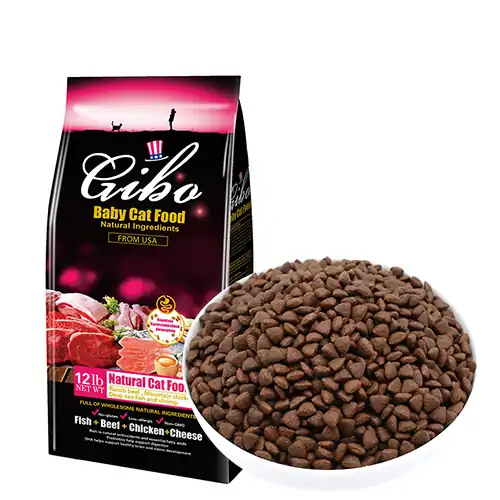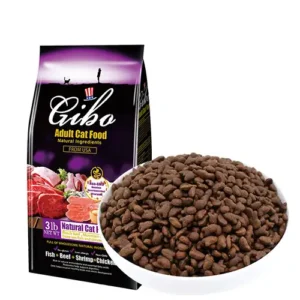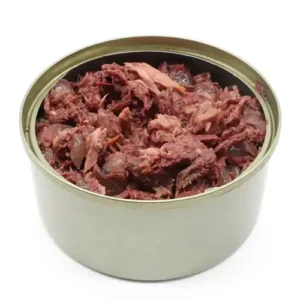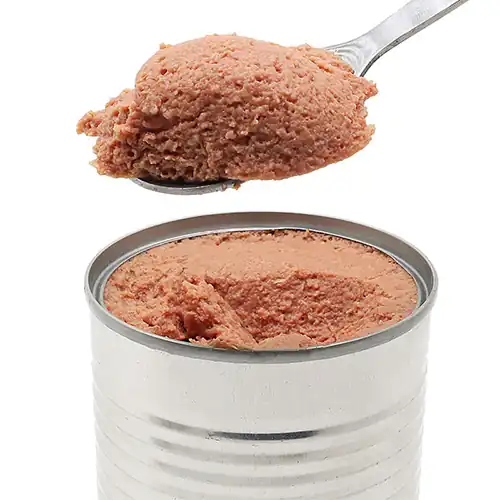How to help picky eating cat?
Does your cat not like to eat? Do you choose to give your cat canned food, but your cat never appreciates it? It’s a common problem for parents of furry children that their cat is a picky eater. Picky eaters can lead to food waste, or they may be worried about their health due to a lack of nutritional balance and insufficient intake.
In this article, we will discuss “5 Possible Causes of Picky Eating in Cats” and “9 Ways to Adjust Your Cat’s Picky Eating”, and recommend “Staple Food Tanks for Picky Eating Cats! We also recommend the “Staple Food Jar for Picky Cats!
Whether you’re a new furry parent or a veteran pet owner, you’ll find practical advice in this article that will help you better understand your master’s tastes and preferences, adjust his or her picky eating habits, and work together to create a healthy and happy dining environment.
Let’s explore and solve the mystery of your cat’s picky eating habits so that your furry child can enjoy delicious and nutritious meals!
5 Reasons Why Cats Don’t Eat
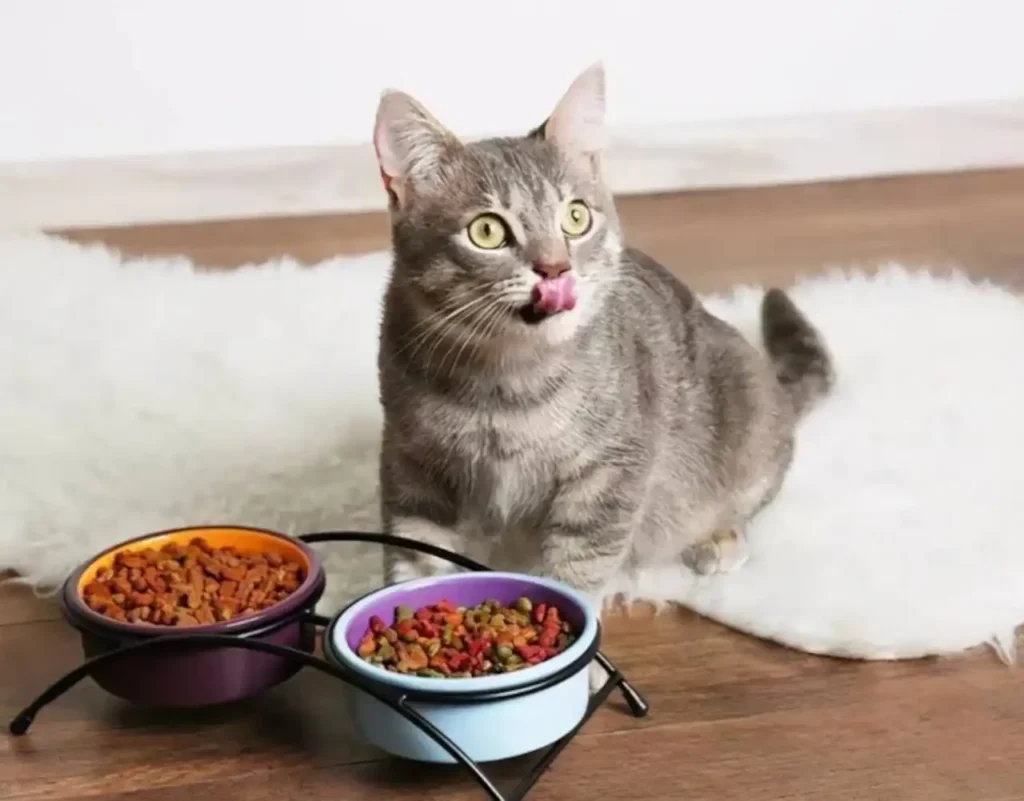
Your cat may be sick
A fussy eater can be a sign of illness, and parents should pay special attention at this time.
First of all, digestive problems can affect your cat’s appetite, such as gastrointestinal upset or intestinal blockage. Secondly, dental problems may make eating painful for your cat, leading to a reluctance to eat. Third, problems with internal organs, such as kidney disease, may cause your cat to lose interest in food.
Other causes include infections or fever, which can cause your cat to refuse to eat due to discomfort. In conclusion, it is important to consult your veterinarian as soon as possible when your cat exhibits abnormal eating behavior to ensure that your cat is in good health. Early detection of the problem will help provide the proper treatment and care to ensure your cat’s speedy recovery.
Letting your cat eat as much as she wants
When parents over-pamper their cats and allow them to choose their food, they may develop a picky eating habit. This behavior can cause your cat to become dependent on certain flavors or brands and lose interest in other foods.
To avoid picky eating, it’s a good idea to offer a variety of foods and give your cat the opportunity to try different flavors and ingredients. Gradually introducing your cat to different foods can help break the habit of picky eating and ensure that your cat receives balanced nutrition.
In conclusion, owners should maintain a certain level of dietary management in order to avoid over-pampering their cats, which can lead to picky eating. A sensible dietary program will ensure that your cat has a healthy and balanced diet.
Food is not fresh
Cats are extremely sensitive to the freshness of their food, and lack of freshness may be one of the reasons why your cat is a picky eater. If your cat has a sensitive sense of smell and can detect spoiled or unfresh food, she may refuse to eat.
Owners should be aware of their cat’s eating habits and ensure that the food they provide is kept fresh during storage and preparation. Opened canned or packaged food should be used as soon as possible to avoid prolonged exposure to air, which can cause spoilage. Cats also like their food to be at the right temperature, and food that is too cold or too hot may cause discomfort.
Ensure your cat receives the freshest, most nutritious food at every meal by choosing high-quality, fresh cat food or trying to make your own freshly prepared cat food. By providing fresh food, owners can boost their cat’s appetite and ensure that they are getting enough nutrients to never be a picky cat again!
Inappropriate food changes
When parents suddenly change their cat’s diet, such as switching brands, flavors or ingredients, the cat may feel confused or uncomfortable, and may exhibit picky eating or refusal behavior.
To prevent your cat from refusing to eat the new food, you should gradually introduce the new food and mix the old with the new to help your cat adapt to the new flavors. This transition period can last several days or longer, depending on your cat’s adaptability. Gradually increasing the proportion of new food and observing your cat’s reaction to it will help to minimize the effects of the dietary change and make it easier for your cat to accept the new food.
Poor eating environment
Cats are very sensitive to the environment in which they eat, and an unsuitable eating environment can be one of the reasons why your cat is a picky eater. A poor environment may include unclean feed containers, loud noises in the neighborhood, or interference from other pets in the vicinity.
Cats usually prefer a quiet, clean eating environment. If your cat’s eating space is not clean, he may refuse to eat because he feels uncomfortable. Additionally, nearby noise or interference from other pets may make your cat nervous, which in turn may affect the mood for eating.
Sometimes, adjusting your cat’s eating environment can help solve the problem of picky eating, making her more willing to eat and keeping her in good nutritional condition.
9 Ways to Adjust Your Cat’s Picky Eating
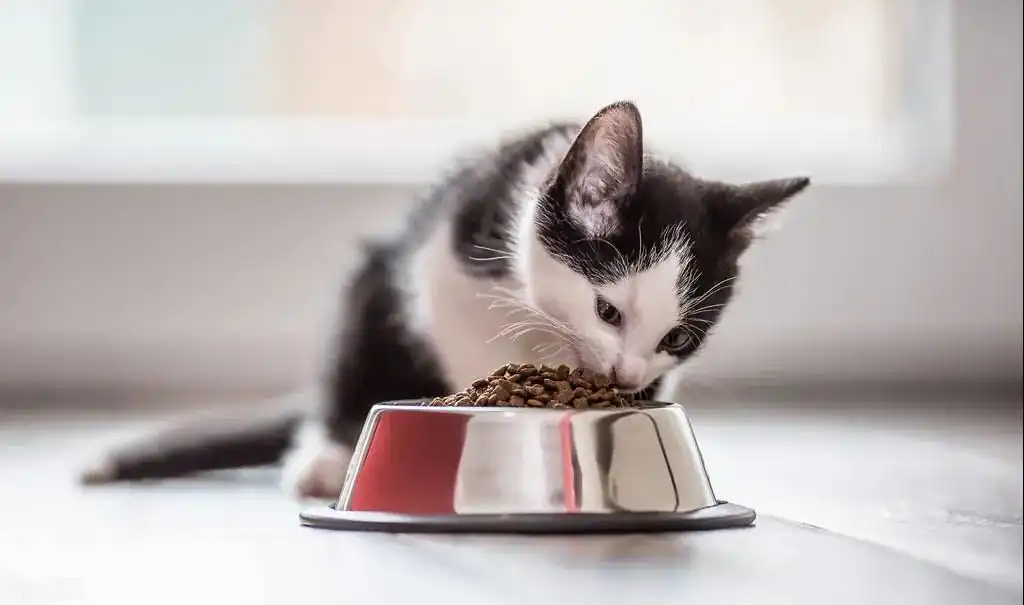
Method 1 Establish good eating habits
Limit Meal Times
In order to establish healthy eating habits, we recommend that parents limit their cat’s mealtimes. Kittens should be fed three times a day, while adults should be fed twice a day. Each feeding should last 30-60 minutes.
Provide enough food during this time, and at the end of the time collect any uneaten food completely, leaving nothing behind. This type of management will help to avoid any leftover food, achieve better dietary control and regulate your cat’s picky eating problem.
Cats have an innate biological clock for regular mealtimes, so timed meals can build up your cat’s expectation of eating. Additionally, irregularly timed meals can cause cats to lose interest in eating and make it difficult to ensure they receive fresh, high quality food.
By having regular meals every day, your cat understands that if she doesn’t finish her food this time, she won’t be able to get it for some time, and over time, she will develop a good habit of eating in an orderly fashion.
Gradual food changes
Frequent changes in cat food can cause your cat to be a picky eater. Cats often look forward to trying new flavors of cat food because they may know that by refusing their current food, they will have the opportunity to acquire new flavors.
In fact, cats that are only offered one or two types of cat food every two months are less likely to become picky eaters. Changing cat food frequently can be confusing for cats who are not sure which food to choose and may even start to eat selectively. Therefore, it is recommended to provide a steady diet for a period of time to help maintain a stable and normal eating habit.
In addition, the ratio of old food to new food is about 2:8, then gradually increase the proportion of new food every day, and reduce the old food by 10% and increase the new food by 10% each time, so that your cat can gradually adapt to the new food!
Method 2: Adjust food type and temperature
Sometimes cats are picky eaters just because they are tired of the food they are eating. Therefore, we suggest that fur parents try providing different ingredients in the canned cat food, so that your cat can have a chance to try a variety of flavors. This may help your cat to find the food that she really likes and get her interested in eating again!
In addition, cats are more sensitive and concerned about the temperature and smell of food than humans, so heating food to about 30 degrees is the most attractive temperature for cats to eat!
Method 3: Appropriate Food Containers
Different materials of food containers may bring about different smells, temperatures, textures and shapes, which in turn affect your cat’s eating experience.
For example, steel bowls used in winter may be colder, which may reduce the flavor of the food, or containers made of certain materials may absorb the flavor of the food, or have a special smell of their own, which may affect your cat’s eating experience!
In addition, the cleanliness of cat bowls is also very important, and it is recommended that they be made of stainless steel, ceramic or glass. Plastic, on the other hand, is prone to scratches during cleaning, which can lead to bacteria infiltration or residue. If your cat uses plastic bowls every day, it can also lead to dark cat acne on the chin.
Therefore, choosing durable and easy-to-clean stainless steel, ceramic or glass bowls will help ensure your cat’s hygiene and health when eating food, as well as helping to regulate your cat’s picky eating habits.
Method 4 Increase activity
Owners are advised to spend some time with their cats every day to play with them or to interact with them more before eating. This not only deepens the bond between owner and cat, but also increases the cat’s daily activity level. By increasing activity, you help your cat burn more calories, which boosts her appetite and makes her more willing to eat. This kind of interaction can also become an enjoyable moment for both owner and cat.
Method 5: Try different textures and shapes of food
Cats have unique preferences for food textures and shapes. Cats will show their preferences when faced with different textures and shapes of food.
There are many different types of wet food, including purees (which can be soft, hard or sticky), shredded meat (often found in canned food), chunks of meat (which resemble purees pressed into pieces or slices of meat like fresh food), and mousses (which are a mixture of moist and dense, some slightly watery, others more like fluffy mousses).
Understanding your cat’s food texture preferences will help you pick out their favorite texture and provide a more palatable eating experience.
Here, we also secretly recommend that you prioritize: watery mousse, sticky puree, or shredded meat! Usually, we get good feedback from our masters!
Method 6 Try different brands & flavors of jars
Because different brands and flavors (even the same brand) use different formulas, they have unique amino acid flavors. Cats inherit food preferences from what their mothers ate during pregnancy, which is an important factor, but of course, cats have their own food choices as well.
If your cat’s preference is not known for certain, consider trying different brands and cans of the same brand with different flavors. Don’t assume that just because your cat doesn’t like a certain brand or flavor of canned food that she won’t like other canned food of that brand or flavor. Each cat has unique tastes, and it is possible that a particular flavor may not be to its liking.
Therefore, trying different brands and flavors is one of the most effective ways to adjust your cat’s picky eating habits.
Method 7: Sprinkle some of your cat’s favorite snacks to enhance the smell
One of the ways to boost your cat’s appetite is by adding an appealing flavor to the food! One of the ways to boost your cat’s appetite is by adding a tantalizing scent to the food! Cats are usually very curious about certain scents, and that includes favorite snacks.
Sprinkling a small amount of kitty treats next to your cat’s food bowl can be a great way to spice up your cat’s main meal. This way, your cat will be able to smell the more appealing aromas as she eats, increasing her interest in the main meal. It’s also a way to gradually introduce your cat to new foods, and gradually reduce picky eating.
Once your cat accepts the new food, you can gradually reduce the amount of snacks you add, and gradually move your cat to the main food. Not only does this method help to minimize your cat’s picky eating, but it also provides your cat with balanced nutrition to ensure a healthy and happy life!
Method 8: Putting food inside a hide-a-toy
For cats, hunting for food is their natural instinct, and before they eat their prey, they also have the characteristic of “playing with their food”. Therefore, putting food in the hide-and-seek toys to enhance their curiosity and let them play games to break the barrier may increase the interest of picky cats in eating their food!
Parents can also try choosing a hide-and-seek toy with a moderate level of difficulty to keep food fresh in their picky cat’s mind!
Method 9: Understanding Your Cat’s Food Preferences
In addition to learning about your baby’s taste preferences, it may also be helpful to refer to your baby’s mom’s taste preferences! Since your cat has been eating with her mom for the first few months of her life, she may have special preferences for her mom’s favorite foods! Parents can also try to find out their mom’s food preferences!


